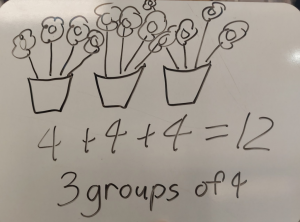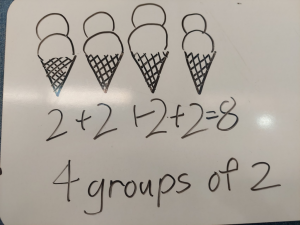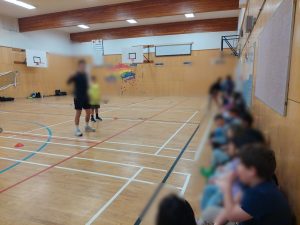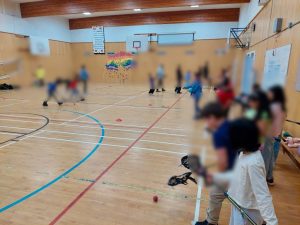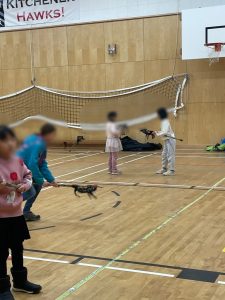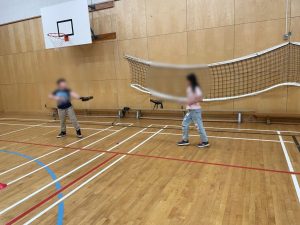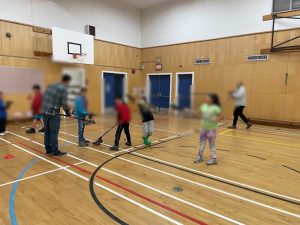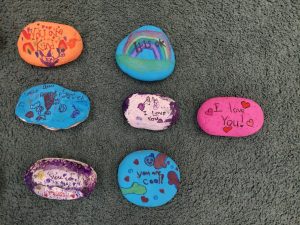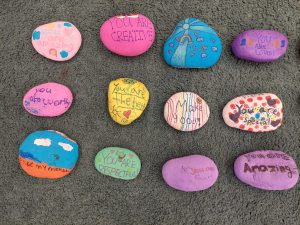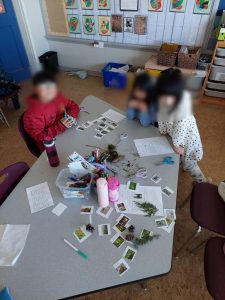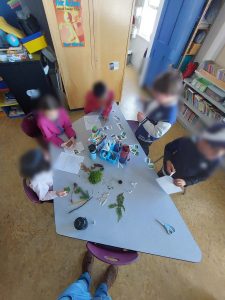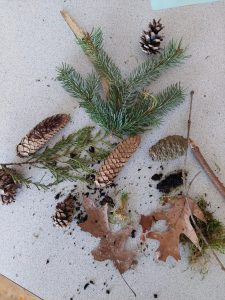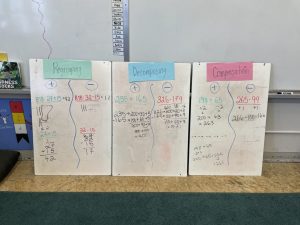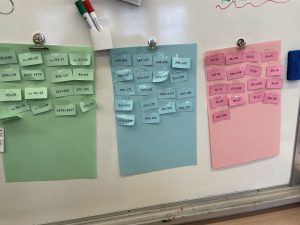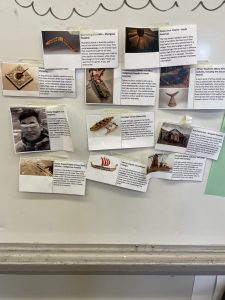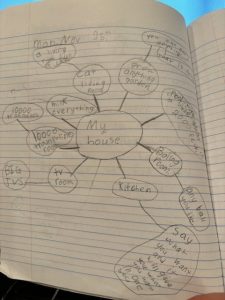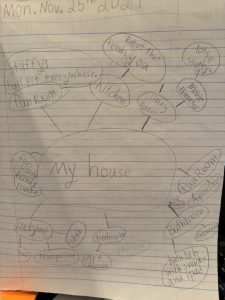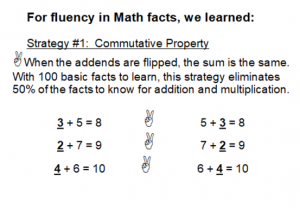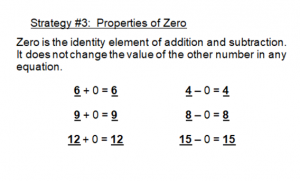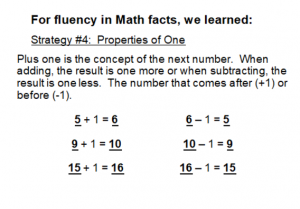Dear Division 11 Families,
We’ve been having so much fun during our skating field trips! It has been wonderful to see the students’ confidence grow in just two sessions. We’re sad that this Tuesday will be our last session, but I know they will enjoy it to the fullest! One of the staff members last week mentioned that this group of students is easily the most helpful and kind group he has ever seen. The students assisted with cleanup and returned the skating bars without being asked. I couldn’t agree more and am so proud of our Division 11 students! – Ms. Kim
Please note: Family Reading will be cancelled this Tuesday but will resume next Tuesday, December 17th. We are looking forward to having you back in our class!
Here is some of the exciting learning happening in our class:
We are writers.
In writing, the students have been learning how to make their writing more engaging by using similes. After a group matching activity, they used similes to describe a car they would like to build—they came up with so many creative ideas! In class, we read My Dog is as Smelly as Dirty Socks. The author also wrote My Best Friend is as Sharp as a Pencil, and McGill Library has a copy if you’d like to check it out.
Ways to support at home: Bring your child to visit the library often. It used to be our weekend family outing when my children were growing up. They have such a wide variety of fiction and non-fiction books to choose from!
We have been working on another piece of writing to further develop our own identity. One of our core competencies of building a positive personal identity: identifying personal strengths and abilities. “Students acknowledge their strengths and abilities, and they intentionally consider these as assets, helping them in all aspects of their lives. Students understand that they are unique and are a part of larger, and often multiple, communities. They explain how they are using their strengths and abilities in their families, their relationships, and their communities.”
 Last week, we read the story “What’s My Superpower?” by Aviaq Johnston. Click here to watch an animated storytelling of the book.
Last week, we read the story “What’s My Superpower?” by Aviaq Johnston. Click here to watch an animated storytelling of the book.
We followed up this week with two books written, illustrated, and published by one of my best friends, Jillian DuBois: Liv’s Messages and Destiny’s Amazingly Different Dreams. All highlight how what makes us special and different can also be our superpowers (strengths and abilities). There was a lesson on acceptance too.
From Amazon about Liv’s Seashells – Beyond the collection of her treasured seashells, Liv knows that there are people around that need to be shown compassion and empathy. She carefully crafts a plan for a journey that promises to reach out and share hope past the limits of the warm sunshine and sandy beach. Liv has a chance to make a difference and uplift others with joy.
From Amazon about Destiny – The story of one amazing girl who understands that being different is BETTER than being ordinary. We each have different gifts + talents to celebrate. Remarkable human beings deserve to be accepted for WHO they are with great JOY.
Ways to support at home: Follow up this learning by talking about your child’s superpowers and your own. What makes you shine? What are your strengths, abilities, and core values? How can you help your child discover their own? This is such an important understanding to develop especially when we face challenges because during hard times, we can anchor into our strengths and core values as our base. As they grow and become immersed in social media, when children have a strong foundation in who they are and have a strong sense of self-worth, then it takes a lot more adversity to shake how they see themselves.
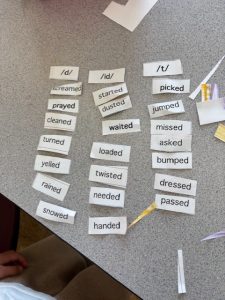
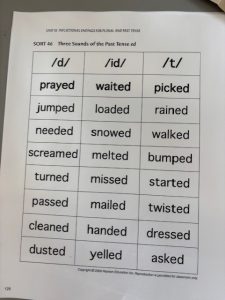 Word Sorts
Word Sorts
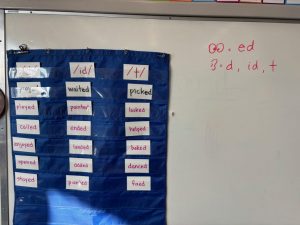 We introduced word sorts to the class and started with the spelling rule for regular past tense verbs: We learned about base words (aka root words) and how we add “ed” to the end of regular verbs.
We introduced word sorts to the class and started with the spelling rule for regular past tense verbs: We learned about base words (aka root words) and how we add “ed” to the end of regular verbs.
When we sorted the words, we discovered that there are 3 sounds of the past tense ed. They cut and then sorted their own words. We practiced sorting the words so we can see the patterns. They were getting faster and more accurate as the week went on.
When we finish with this word sort, it will go home. Please continue to practice until they are proficient. They can practice spelling these words too.
When looking at the words, there are some with two vowels next to each other. We learned a new song that reinforces that when two vowels to walking, the first one does the talking and says its own name. It’s the same tune as the Addams Family song and catchy. I had it stuck in my head many times over the weekend! Ask your child to sing it to you! Here’s the song:
When two vowels go walking,
The first one does the talking.
When two vowels to walking,
The first one says its name.
 We are Mathematicians.
We are Mathematicians.
During Wondering Wednesday, Division 18 students joined our class, and our students helped them learn about fractions. In pairs, they looked for fraction cards hidden in the classroom and compared each fraction to 1/2, deciding whether it was greater than, equal to, or less than 1/2.
Afterward, they played a place value game we’ve been practicing in class. I’ve attached a link below so you can try it at home. To extend the activity, you can include a fourth card to create numbers in the thousands.
https://www.youtube.com/watch?v=Pi6mVOA2pIU&t=289s
For place value, we did an assessment to check for understanding, and we were so very proud of how well they learned these number concepts!
This week, they will bring home their Patterns booklets from earlier in the year to show you.
We learned our next math fluency strategy: Adding or subtracting by 2’s is like skip counting by 2’s.

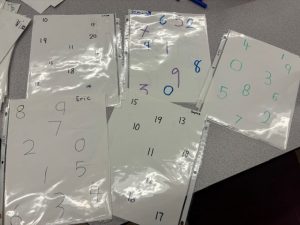 Using our random numbers chart, we practiced adding by 2’s and subtracting by 2’s. It is not as efficient to calculate + or -2 but instead, it is quicker to see a number and see the next number before or after by 2.
Using our random numbers chart, we practiced adding by 2’s and subtracting by 2’s. It is not as efficient to calculate + or -2 but instead, it is quicker to see a number and see the next number before or after by 2.
For example:
If I am adding by 2, then when I see a 6, I automatically see 8 without thinking, “What is 6 + 2?” Instead, If I know how to fluently count by 2’s, then I know that 8 follows 6.
Ways to support at home: Using a random numbers chart, have your child practice +1, -1, +2, -2. Even if your child practices for a few minutes each day, they will definitely gain fluency by the end of the school year!
We are scientists.
They are excited to bring home their Matter & Thermal Energy booklets to show you what they know too! When they bring these booklets home, ask them to teach you the concepts learned. This solidifies their learning.
We started a new science unit about biodiversity and ecosystems. Stay tuned for more of our learning shared with you!
ADST – We are developing our tech skills!
On Friday, we logged into Office 365 and learned a few tools on Microsoft Word. To reinforce their learning, I encouraged them to practice logging in at home. To do this, go to our Kitchener website.

On the drop down menu, click on Microsoft 365. A sign in box will appear. Have them practice typing in their email address which is their pupilnumber@edu.burnabyschools.ca. Click Next.

A new box will ask for their password. It is the same one they memorized.
Then they were directed to find the list of apps using the icon on the top left corner and find the W (which stands for Word):


Once they launched Word, they were taught to create a new document, rename their document, type their name, and then play! They played with the size, font, colour, alignment, highlighting, bolding, italicizing, or underlining their names. They loved it and thought it was so cool!
I highly recommend that you support your child’s learning by practicing logging into Word at home and having fun together playing with the tools available. This will help them become more proficient at logging in and using Word the next time we use the laptops this Friday. Thank you!
If your child has not memorized their usernames and passwords yet, please spend some time at home to memorize them. It really diminishes their frustration at school when they struggle with the first part of using laptops. The ones who have become proficient are able to have more time on the task too. Thank you.
We are a interconnected community of learners.

One of my favourite tried and true activities that I, Ms. Chan, love to do is our spider web activity. I started with a ball of yarn and shared what I love and appreciate about our classroom community. Then I passed it to someone across from me. Then that person shared what they love or appreciate about our community and so on and so on until everyone had an opportunity to share.
It built a beautiful web which resulted in a powerful visual to see. We talked about how we are all interconnected, which is one of the Indigenous ways of knowing and being. We discussed how what we say and do affects others maybe not directly but indirectly.
Then I gave an example of someone saying something mean to someone else as I shook the yarn. They could see that when I shook the yarn, others were impacted. Others could hear what was said (or see what was done) and that makes others feel sad and bad. We dove into talking about emotional contagion.
Next, I demonstrated how when one person says something kind (they got to go on their knees) and the another person does something thoughtful (they got to go on their knees) until everyone’s name was called and everyone was on their knees. We stood up to demonstrate how we all can uplift each other through positive actions and words. They visually got to experience how since we are all connected, small actions and words uplift not only the other person but everyone else in our community.
When we were finished, we reflected on this activity. My heart melted when I heard about how they enjoyed listening to each other share. They experienced the impact of their actions and words, and how they all contribute to making our classroom community a great place to be. They got to hear exactly what their classmates appreciated about being in our class. One child mentioned how what we shared touched his heart and how he felt teary (and emotional) because of our shared positive emotions.
I reinforced how every interaction makes a difference.
Thank you for your continued support at home! We appreciate you!
Events to note
- Ice skating on Tuesday, December 10
- PAC meeting on Thursday, December 12 at 6:30pm (virtual)
- Reports are available online on Wednesday, December 18. Please ensure you have your login information to access before the date. If you do not, click here to have your login and password reset. It may take a few days.
With hearts full of gratitude, Ms. Kim and Ms. Chan


